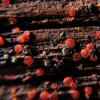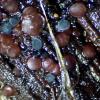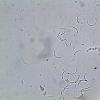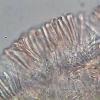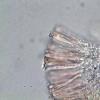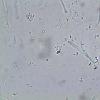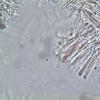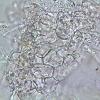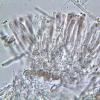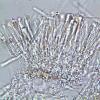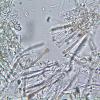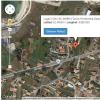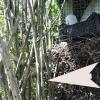
16-05-2015 08:20
Me envian foto desde GaliciaComo voy a estar fuera

26-05-2015 17:19
 Nicolas VAN VOOREN
Nicolas VAN VOOREN
Bonsoir.Je cherche l'article suivant:Yao Y.J., Spo

26-05-2015 11:53
Gernot FriebesHi,I'm not sure where to place this fungus which I

26-05-2015 20:12
Quijada LuisHi all,somebody have the following manuscript:More

26-05-2015 20:17
 Miguel Ángel Ribes
Miguel Ángel Ribes
Does anyone know the distribution of Trichoglossum

26-05-2015 07:50
 Andreas Gminder
Andreas Gminder
Dear collegues, we have found a Pyrenomycete duri

26-05-2015 14:21
No me es posible confirmar que la rama es de Vi

25-05-2015 13:49
Hi again This Amicodisca species grew on wood,
Orbilia rubrovacuolata ?
Castillo Joseba,
16-05-2015 08:20
Como voy a estar fuera de mi casa 15 dias no podre hacer de momento micro, pero con ese color creo que puede ser Orbilia rubrovacuolata, a ver que os parece
Joseba
Hans-Otto Baral,
16-05-2015 21:52

Re : Orbilia rubrovacuolata ?
Surely this is. So you collected this when not at home? Please give me the collection data, and whenever possible, test micro. I hope the paraphyses will keep the red colour even in the dead state. If you manage a section of the margin this would also be helpful because of glassy processes.
Blasco Rafael,
22-05-2015 18:13
Hans-Otto Baral,
22-05-2015 19:15

Re : Orbilia rubrovacuolata ?
Yes, thanks! Clearly O. rubrovacuolata.
Anmd obviously without glassy processes. Great how strongly the spores can be curved.
Now i would be glad to get the collection data to include this in my map.
Zotto
Anmd obviously without glassy processes. Great how strongly the spores can be curved.
Now i would be glad to get the collection data to include this in my map.
Zotto
Blasco Rafael,
24-05-2015 16:54
Castillo Joseba,
24-05-2015 17:13
Re : Orbilia rubrovacuolata ?
Completo mas los datos:
Se localizó esta especie por primera vez el 28-11-2011, y en años posteriores ha seguido encontrandola en el mismo sitio.
Como dice Rafael, los ejemplares se han encontrando en ramas de restos de poda de arboles frutales, de momento es imposible saber que tipo de arbol, pero estamos intentandolo.
El Lugar O Grove, Pontevedra, España, ...latitud 42.495531 / longitud 8.881003 a nivel del mar.
Se localizó esta especie por primera vez el 28-11-2011, y en años posteriores ha seguido encontrandola en el mismo sitio.
Como dice Rafael, los ejemplares se han encontrando en ramas de restos de poda de arboles frutales, de momento es imposible saber que tipo de arbol, pero estamos intentandolo.
El Lugar O Grove, Pontevedra, España, ...latitud 42.495531 / longitud 8.881003 a nivel del mar.
Hans-Otto Baral,
24-05-2015 18:08

Re : Orbilia rubrovacuolata ?
many thanks! I made the following entry:
Galicia, Pontevedra, 1.3 km W of O Grove, Lugar O Con, 10 m, branches of ?Rosaceae, on wood, V.2015, J. Castillo (........, d.v.).
Lugar and O Con seem to be two suburbs of O Grove? Is Rosaceae certain, or is it another family of fruit trees? The date of this new collection would be valuable, also the collector and a herbarium number.
I assume the branches were lying on the ground, perhaps cut and placed on a pile?
Zotto
Galicia, Pontevedra, 1.3 km W of O Grove, Lugar O Con, 10 m, branches of ?Rosaceae, on wood, V.2015, J. Castillo (........, d.v.).
Lugar and O Con seem to be two suburbs of O Grove? Is Rosaceae certain, or is it another family of fruit trees? The date of this new collection would be valuable, also the collector and a herbarium number.
I assume the branches were lying on the ground, perhaps cut and placed on a pile?
Zotto
Castillo Joseba,
25-05-2015 14:26
Re : Orbilia rubrovacuolata ?
Hola Zotto, ha habido un problema con la información que he cruzado con el recolector ... te pongo los datos correctos. Recolector: Miguel Angel Delgado Fecha de la recolección 13/05/2015 Lugar: O Grove ... Pontevedra... España Coordenadas: LATITUD 42.495531 LONGITUD -8.991003 En rama de Eucalipto NO HAY HERBARIO Las ramas apiladas, pero no en el suelo (envio foto) O Grave es una peninsula en la costa de Galicia en España, con una población de unos 12000 habitantes, con costa rocosa y playas, el suelo es generalmente arenoso.
Hans-Otto Baral,
25-05-2015 15:49

Re : Orbilia rubrovacuolata ?
The coordinates now seem to be bad, I come in the see near the island of Sálvora. Correct is 8.881003.
Incredible that the apos grew on staning branches. So the sticks were put in the ground, and the apos grew in ca. 1/2 m above ground?
Incredible that the apos grew on staning branches. So the sticks were put in the ground, and the apos grew in ca. 1/2 m above ground?
Blasco Rafael,
27-05-2015 17:43

Re : Orbilia rubrovacuolata ?
Hola Zotto
correcto es 8.881003.
despues de comentarlo con Miguel Angel,que me mando las muestras para su estudio, le comunique que las secaba y les daba un numero de herbario
Numero de herbario
RB-13-05-15-817-GA
Un saludo
Rafael
correcto es 8.881003.
despues de comentarlo con Miguel Angel,que me mando las muestras para su estudio, le comunique que las secaba y les daba un numero de herbario
Numero de herbario
RB-13-05-15-817-GA
Un saludo
Rafael
Hans-Otto Baral,
27-05-2015 18:07

Re : Orbilia rubrovacuolata ?
Mayn thanks, Rafael! One question, are you living in Benasque? Because we mention each person who contributed to the monograph by the name and hometown.
Zotto
Zotto
Blasco Rafael,
27-05-2015 20:06

Re : Orbilia rubrovacuolata ?
Hola Zotto.
Vivo en zaragoza , pero para los fines de semana tengo una caravana en Benasque y subo siempre que puedo
Un saludo
Rafael
Vivo en zaragoza , pero para los fines de semana tengo una caravana en Benasque y subo siempre que puedo
Un saludo
Rafael
Hans-Otto Baral,
27-05-2015 20:50

Re : Orbilia rubrovacuolata ?
Gracias!
